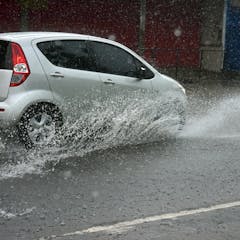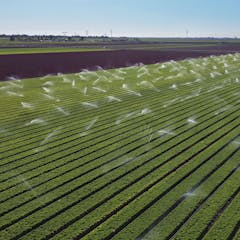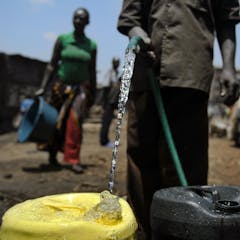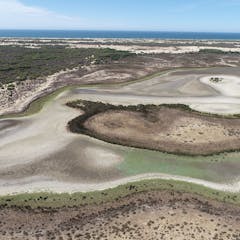
Articles on Water supply
Displaying 1 - 20 of 51 articles

Extreme downpours and droughts, both fueled by rising global temperatures, are taking a toll on water infrastructure. Communities trying to manage the threats face three big challenges.

More efficient water use is one of the most cost-effective steps we can take to cut emissions.

These giant rivers in the sky are both destructive and essential for the Western U.S. water supply.

Rapid and accelerating groundwater level declines are widespread in dry climates where groundwater is used for irrigation. But some communities have found ways to turn things around.

Achieving continuous supply requires both a realistic assessment of the situation and a realistic plan to meet the goal. The Government of India’s new initiatives have neither.

Too much stormwater is disappearing down the drain. Here’s how our cities can make more of their last untapped water source.

To build drought resilence, Sydney must invest in rainfall-independent water supplies.

Labour, yields, and biodiversity are all elements of agriculture that need to be balanced.

South-west Australia relies on groundwater for three-quarters of its water use. But a new study of the region’s caves has found a drying climate is having a dramatic impact on this precious resource.

African cities contribute the least to but bear the highest impact of climate change in terms of frequency and severity of weather events.

Two decades of drought have reduced the river’s flow by one-third compared to historical averages. The Biden administration is considering mandatory cuts to some states’ water allocations.

Digital technology is changing the way water is accessed in Ghana. Water ATMs are gaining traction as a means to an end.

Jordan is planning a major desalination plant on the Gulf of Aqaba – but will it damage nearby marine ecosystems?

Unprecedented droughts leave the subsurface drier than usual, affecting water supply in subsequent years.

If you’re on holidays, the water may taste different. But is it safe to drink?

While we know how global changes in freshwater pose risks to humans and ecosystems, we know less about how people and ecosystems will respond to these global freshwater challenges.

High intensity rain has actually increased, which is topping up underground water stores.

Unless action is taken, the UK will be unable to supply its own water needs in the future – we should look to water-scarce regions such as California for inspiration.

Australian politicians have a history of opting for high-cost, high-emissions desalination projects. The Queensland government is still wary of using the largely untapped resource of recycled water.

Paris successfully took water back into public ownership. There is growing evidence to suggest England should do the same.
